Check out Colombia Photo Galleries of past Mushroaming Adventures:
275 photos from Mushroaming Colombia 2017 220 photos from Mushroaming Colombia 2016 190 photos from Mushroaming Colombia 2015 130 photos from Mushroaming Colombia 2014
250+ photos from Colombia 2020 , Colombia Cordyceps 2020 171 photos from Mushroaming Colombia 2023 photos from Mushroaming 2024

Mushroaming Colombia 2025 - March 30 to April 10
From the Amazon Foothills to the Andean Oak Cloud Forest
Expert guided by Daniel Winkler & Dr. Tatiana Sanjuan
The Mushroaming adventure will start and end in Bogotá.
The tour will include visits to Puerto Asis, Mocoa, San Agustin and Pitalito.
The tour starts in the afternoon of Match 30 in the buzzing Andes metropolis of Bogotá. We will explore Bogotá’s rich culture and learn about its political history. We will visit the world-famous Gold Museum, where we can see Psilocybe made in gold by the ancient indigenous people of Colombia. On March 31 in the morning we will explore the historic neighborhood Candelaria in the heart of the city and in the afternoon we will visit Bogotá's impressive Botanical Garden before boarding our plane to the Amazon foothills.
Once leaving Bogota our Mushroaming adventure adventure in Southern Colombia’s Andean corridor will have three main areas of interest; First we explore the Amazon foothills, one of the “Hot Spots of Biodiversity” in the world. Here, near to Puerto Asis, we will be visiting pristine jungle, the habitat of many species of Cordyceps or “zombie fungus”. Also, we will enjoy waterfalls and visit interesting rock formations. We will be spending our nights in the country side near Villagarzon, the gate to the Amazon, to immerse ourselves unto the main attractions of the area, its impressive nature.
Then we will move slowly upwards to the transition forest between the tropical Amazon and the Andean cloud forest in the direction to Pitalito in Huila department. There we will visit the endemic Black oak forest, dominated by Colombobalanus (= Trigonobalanus) excelsus, an oak with one of the most unique ectomycorrhizal associations as well as White or Andean oak forest (Quercus humboldtii). And when not exploring in the old growth forests we will be enjoying one of the best coffees in the world grown right there.
Finally, we will visit San Agustín Archaeological Park, a World Heritage Site and a truly unique place in the world. We will explore its fascinating stone monuments and immerse ourselves in the rich history of pre-Columbian civilizations, visiting the Magdalena River gorge, the narrowest point of one of the most important rivers in Colombia. In addition, along the trails crossing the gorgeous forests between the archeological sites, we will enjoy a beautiful diversity of fungi.
We will return by plane from Pitalito airport to Bogota in the late afternoon of April 10.
Highlights on this trip
Bogotá, the buzzing Andes metropolis with its rich culture, such as the world-famous Gold Museum. We will explore the historic neighborhood Candelaria in the heart of the city and visit Bogotá Botanical Garden.
Amazon Lowland jungle
Explore an incredible fungal diversity in the Amazonian forest. Observe the tiny Pygmy marmoset, a native primate in the western Amazon Basin, as well as many unique birds.
“Where the Sun Sets Waterfall”
an imposing waterfall surrounded by lush Amazonian vegetation, which gets its name from the spectacular sunset one can observe from this place. The sun seems to set between the mountains and the jungle, which gives rise to its poetic name. This is the perfect place to observe Cordyceps zombie ants.
Mocoa market
Treat and Surprise yourself with the great variety of exotic Amazonian fruits as well as its rich indigenous culture in this multicultural city.
Andean Cloud forest
The home of many ectomycorrhizal mushrooms associated with the endemic Colombobalanus Black oak of Colombia.
Coffee Farm
Visit a coffee farm in the Andean corridor with microlots of specialty coffees, learn about the entire coffee process, from planting to cup. Also, enjoy a sensory experience, with the flavors and aromas of one of the best cups of coffee.
San Agustín Archaeological Park
Its impressive mountainous landscape and archaeological wealth offer an enigmatic and gigantic necropolis built by the pre-Hispanic culture of San Agustin more than 800 years ago.
Magdalena Gorge
This is a natural landscape where the Magdalena River narrows to just 7 feet wide, creating a canyon. This place, surrounded by vegetation and rock formations, offers a spectacular view.
Please note that sometimes the itinerary might have to be changed due to circumstances.
Colombia is a very diverse, listed as one of the world's 17 megadiverse countries, actually the most biodiverse per square kilometer. Colombia is a truly fascinating country. Traveling in Colombia is such a joy. Colombians seem so happy and proud to share their country with foreigners again. It is emerging as one of the most enticing destinations in South America since civil unrest has mostly ceased and normality has returned. Colombia is located at the nexus of South and Central America.

For preregistration do send us an email, the 2019 and 2020, 2023 & 2024 tours sold out!
$3950 (7-8 participants)
$4250 (6 participants) - $4350 (5 participants)
Price includes all expenses on the ground for accommodations in double room, meals & ground transportation.
Not included are alcoholic drinks, coffee breaks, snacks, laundry, tips, souvenirs, etc. Also not included are the 2 flights in Colombia (each about USD 60). personal airport transport when arriving / leaving Colombia.
Single room extra charge $250
(available for 6 nights, in several location (5 nights) there are only double rooms are available).
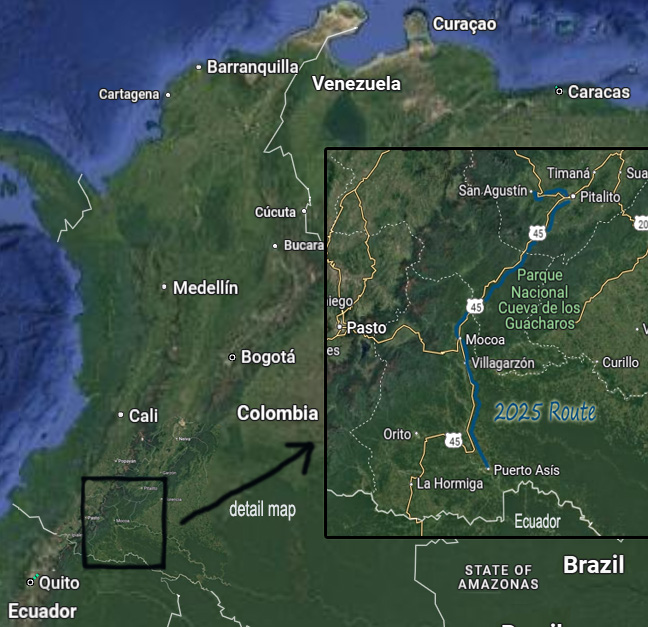
Map of Colombia with insert of the area of our 2025 itinerary.
Note: For years Colombia's tourism has suffered from lack of security in the country. However, the security for foreigners has substantially improved in recent years. In late 2016 the government has signed a peace accord with the biggest rebel fraction and Colombia is moving beyond the painful decades of internal violent clashes and tourism is picking up again. Still providing safe travels is most important to us and we need to state that there is a slight chance that we would need to adjust the itinerary in case of unforeseen changes in public safety.

Excavated statues in the necropolis of San Agustin. These figurines have been made in the first millennia.
Lots of my Colombia 2020 and Colombia Cordyceps 2020 images have been taken in places we will be visiting in 2025 again.
To see beautiful mushroom images from many previous Mushroaming Colombia adventures visit my Photo Gallery or go straight to the 2023 photos: Mushroaming Colombia 2023

Cordyceps caloceroides digesting a Tarantula we found in the Colombobalus forest in 2020.
Below photos from our Mushroaming Colombia journeys some years ago. The Mushroaming photo galleries, linked on top and at the bottom of this page have many more images and more recent ones:

These oak-associated chanterelles are very closer to the Smooth Chanterelle Cantharellus lateritius var. colombianus.

Another Andean oak associate is the much rarer Cantharellus atrolilacinus,

A tiny Marmosette monkey seen near Puerto Asiz. We will visit their forest and hope to watch them in the wild.

Mushroaming we find all kinds of exciting lifeforms, like this colorful Monkey Hopper (Paramastax sp.)

The strange Penecilliopsis sp. parasitizing a palm seed.

Colombobalanus (=Trigonobalanus) excelsa forest, known in Colombia as Black oak near Pitalito. Note the person in the center for scale

Laetiporus sp., Sulphur shelf a.k.a. Chicken of the woods growing on a dead Colombobalanus excelsus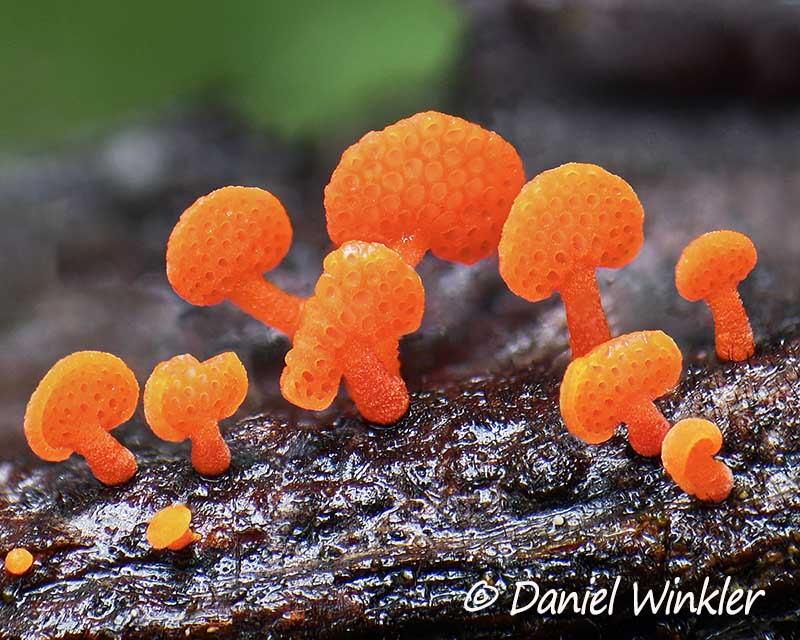
Favolaschia rubra, a gorgeous, close relative of Mycena.

Forest with ancient Cyathea tree ferns.

A grave figure, are these protectors for the deceased?, which still has its original coloration seen in El Purutal, San Agustin,
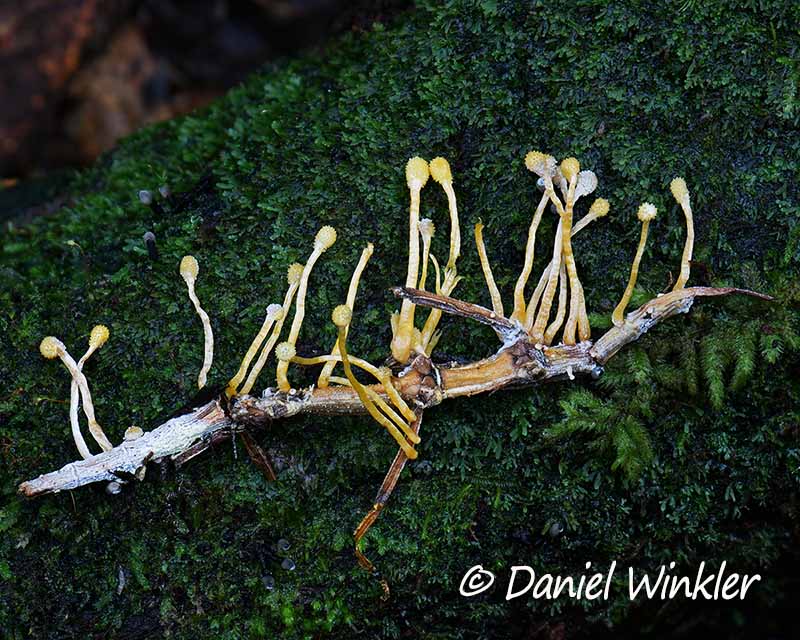
An overmature Beauveria diapheromeriphila parsitizing a stickbug that is partially decaying.
These weird Cordyceps are so far only known from the Amazonian foothills in South Colombia and North Ecuador.
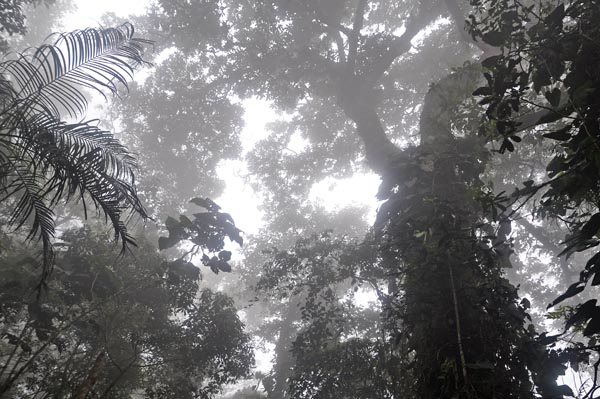
Clouds enshroud the mountain Andean oak forest (Quercus humboldtii).
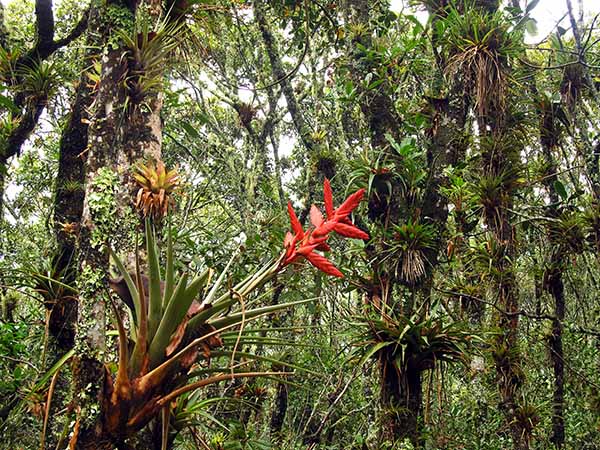
Bromelias in Andean oak (Quercus humboldtii) forest. Photo: Tatiana Sanjuan
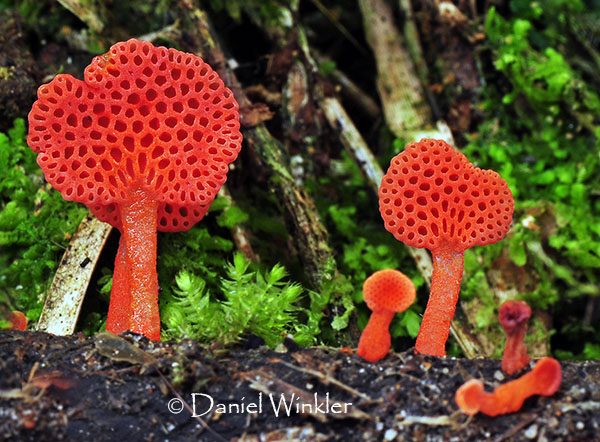
A scarlet Favolaschia, which is a gorgeous wood decaying member of the Mycenaceae family. Most Mycenaceaea members are regular gilled mushrooms.
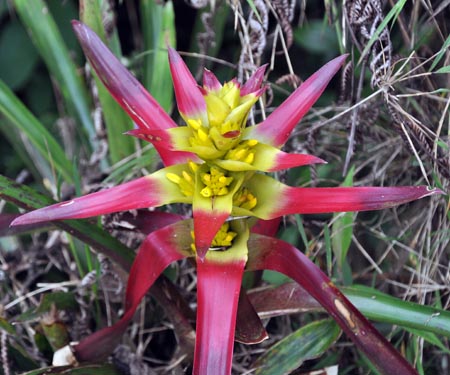
A Guzmania, a member of the Bromeliaceae family, which also includes pineapples and Tillandsia.
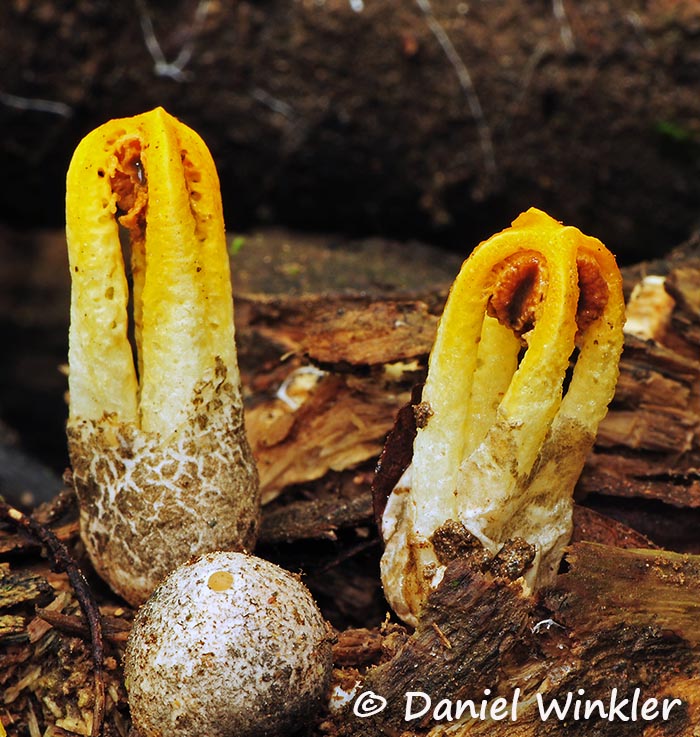
Laternea dringii, a tiny but gorgeous strange stinkhorn endemic to the neotropics growing in late stage decaying wood in Rio Claro, Antioquia, Colombia.
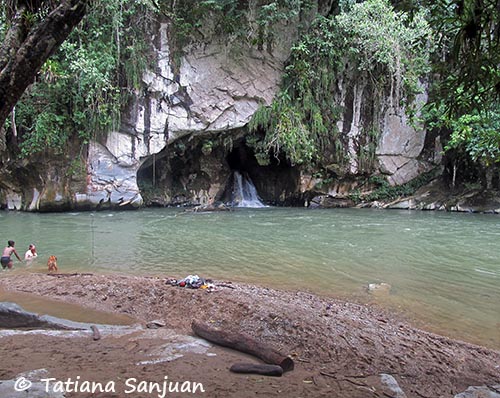
Río Claro - note the waterfall coming out of a karst cave.
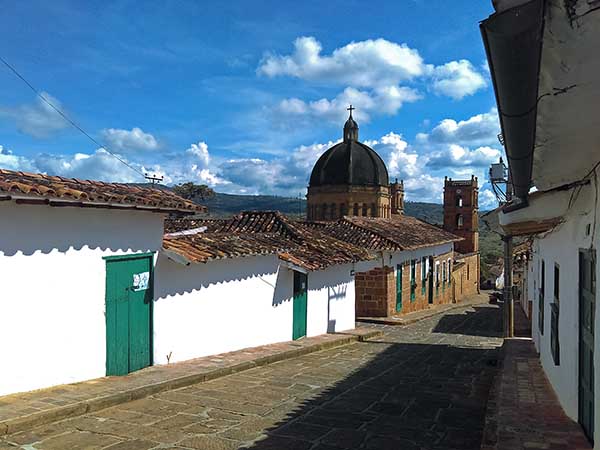
Looking down a street to the cathedral in Barichara. Photo: Tatiana Sanjuan
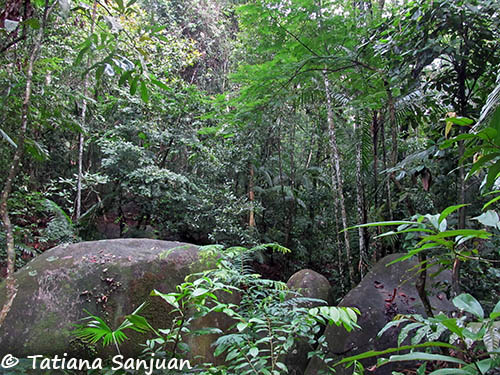
Diverse neotropical forests in Maraquita.
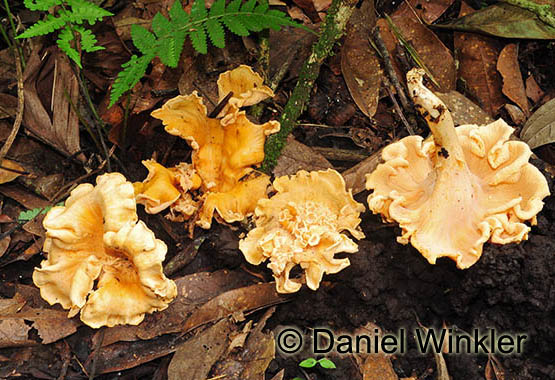
Nice juicy, big chanterelles. Hardly any Chanterelles or for that matter any other edible mushrooms are collected in Colombia due to lack of knowledge. The exception is in the Villa de Leyva area, where people collect corals, chanterelles and a neotropical Shiitake relative.
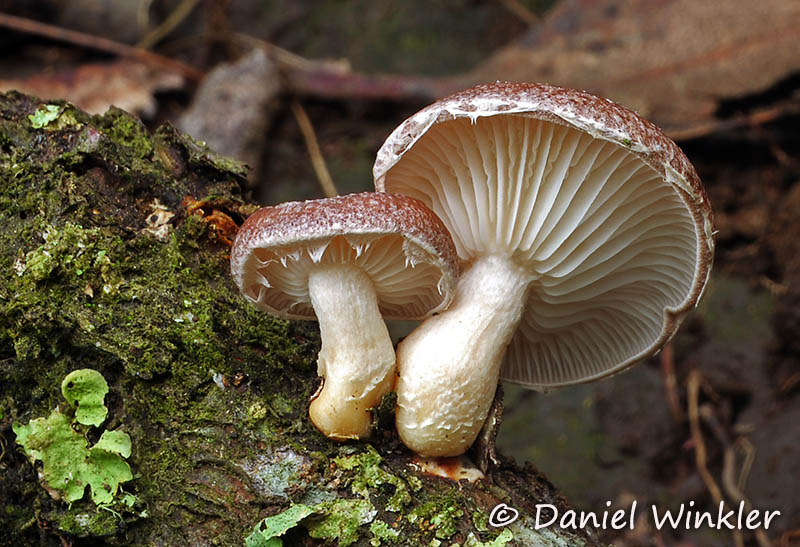
Lentinula aciculospora is a close cousin of Shiitake (Lentinula edodes) and also a good edible and known as such in the Villa de Leyva area.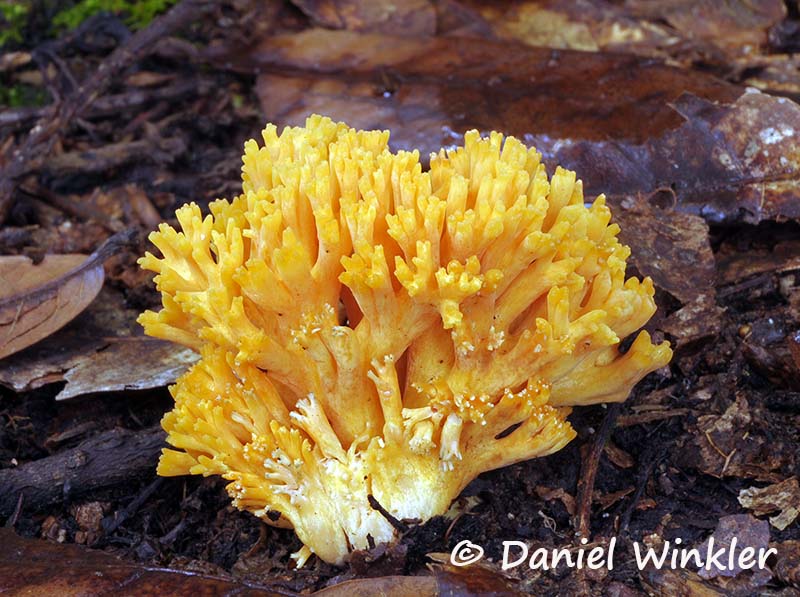
A Ramaria sp. coral known locally as "Manita" and appreciated as an edible mushroom. Seen near Iguaque Parque Nacional.

A "Zombie ant" with the parasitic fungus Ophiocordyceps unilateralis group growing out of its neck. This ant was direct by the fungus in this location. At this point the fungal fruiting body is not developed yet beyond a little "horn-like" structure. Once the fungus has moved the ant in its final location for optimal spore dispersion, it makes the any bite into a leaf or twig and/or clasp a twig. Then the ant will be killed off by the fungus and the fungal mycelium will anchor the insect to the site. At this point the fruiting body will grow and mature.
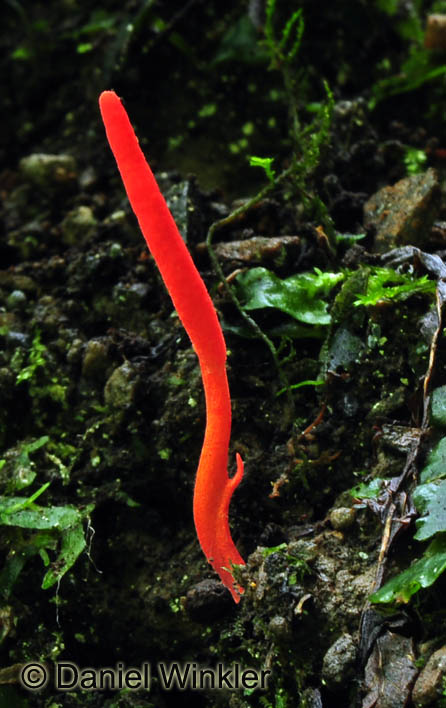
A Cordyceps stroma growing out of a steep slope. Digging out will reveal its identity, see below...

Cordyceps nidus growing on a trap-door idiopidae spider.
This photo made it into the article of the first description of this new species by my Mushroaming Colombia partner Tatiana Sanjuan entitled
Metabolomic profile and nucleoside composition of Cordyceps nidus sp. nov. (Cordycipitaceae): A new source of active compounds. June 2017 PLOS ONE 12(6)
Link to my Cordyceps of Colombia blog page
MUSHROAMING COLOMBIA 2023
By Drew Bennie
Here with Mushroaming, our little band,
Searching for Mushrooms across this big land.
Wet by the rain, burnt by the sun
On our daily Mushroom forays but all having fun.
On a horse, holding the reins,
Across the termite mound covered plains.
Sloshing across the Pantanal
While Capybaras stare at us all.
Caiman lounging by the lagoon,
In the sun at high noon.
Don’t get too close, give him room
Or he’ll swim off way too soon.
Across the U.S. from different places,
Seeing new things, meeting new faces.
Viewing tropical birds and interesting plants,
Little Deer and Foxes and Leaf Cutting Ants.
All sorts of Mushrooms, too many to choose!
You don’t see the Puma but you know he sees you!
Led by two Mushroom experts who know how to roam
But after two weeks, it’s time to go home.

Capybaras (Hydrochoerus hydrochaeris), the largest of all rodents are soaking in style near Rancho Montana in Casanare.
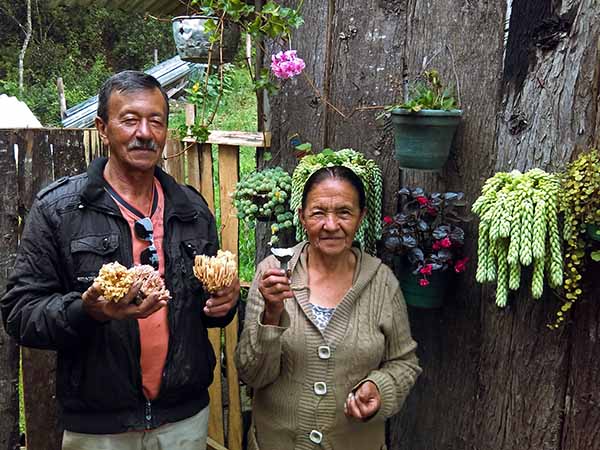
Farmers from Pauna Boyaca with edible corals (Ramaria sp.) and Indigo milkycap (Lactarius indigo). Photo: Tatiana Sanjuan
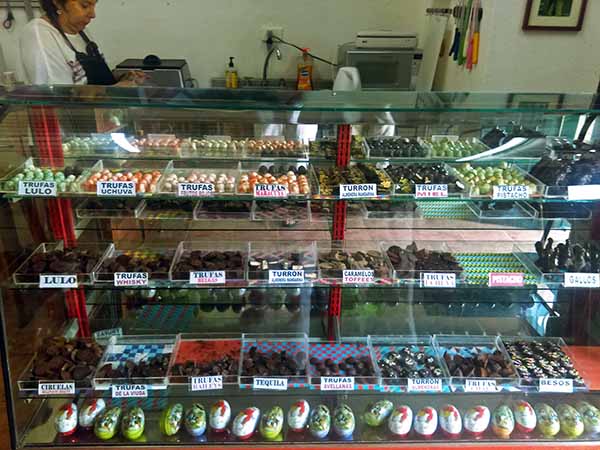
Frida Cacao is the best place to taste the locally grown chocolates. Photo: Tatiana Sanjuan
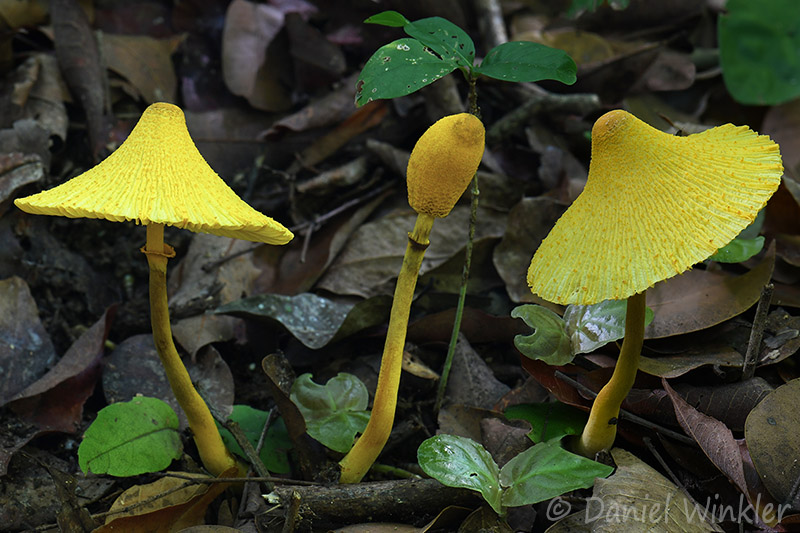
Leucocoprinus birnbaumii seen in Rancho Montana, Casanare. Elsewhere known as the Flowerpot Dapperling.

Laternea pusilla, a strange stinkhorn fungus. 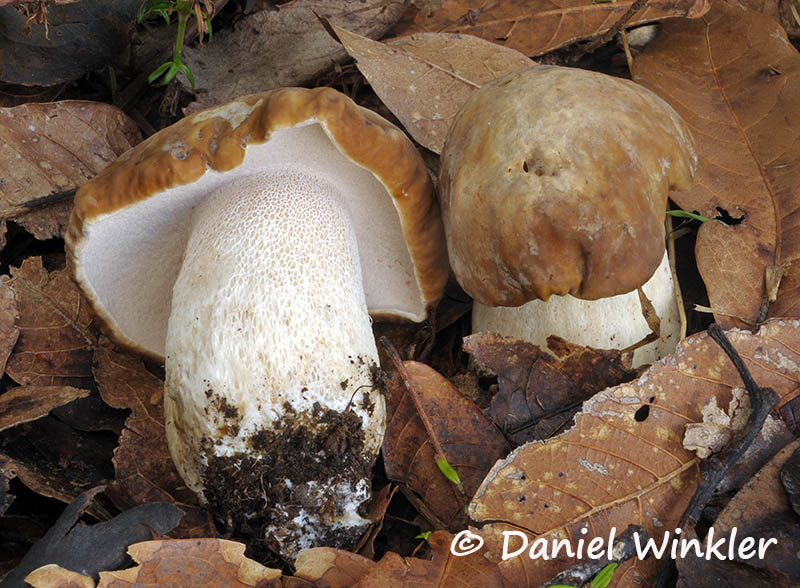
A porcini-like Bolete we found near Villa de Leyva. It could be Boletus variipes. It had the nutty mild taste, people love in porcini.
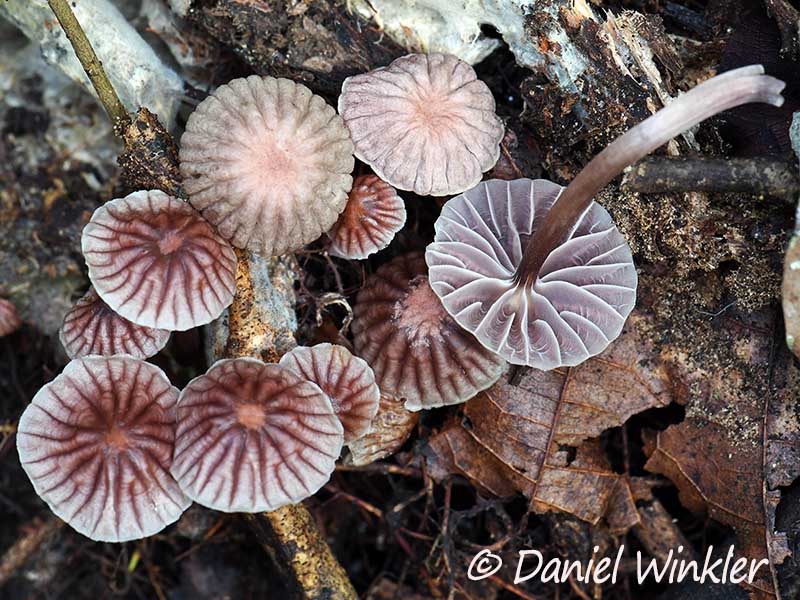
Mycena holoporphyra, a common Bonnet
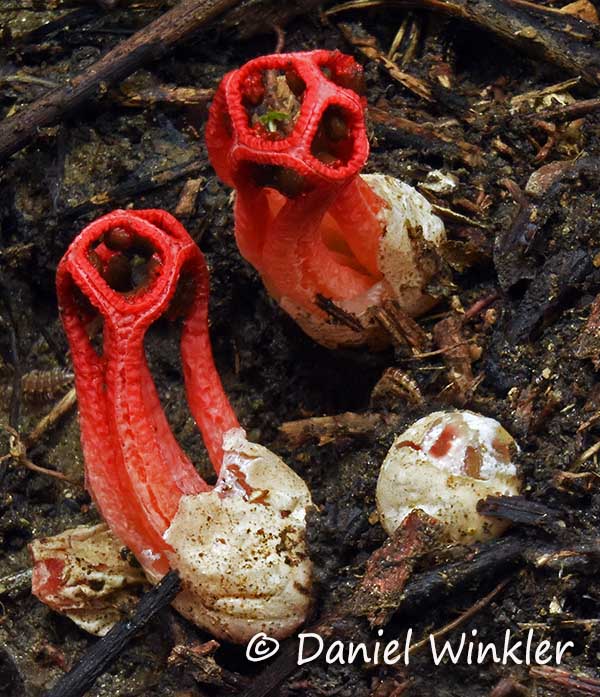
Clathrus sp. stinkhorn with egg of immature stinkhorn. Seen in Tayrona.
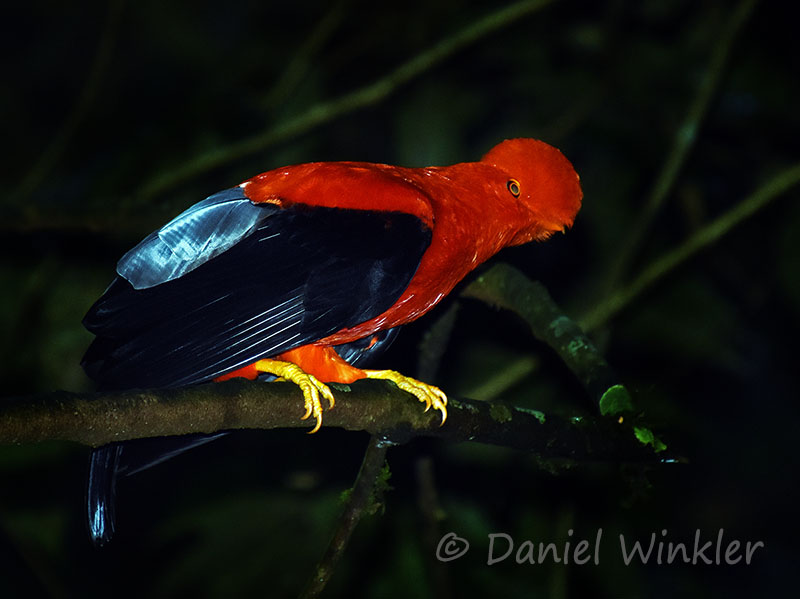
A Cock of the Rock (Rupicola peruviana) seen in Jardin.
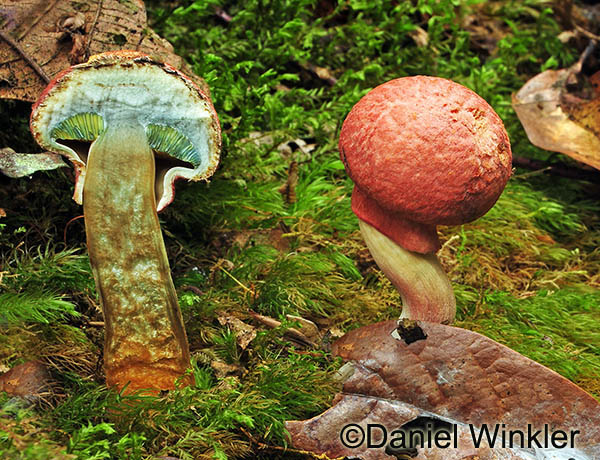
Boletellus ananas growing with Humboldt's oak in the Colombian Andes. What a beautiful and strange partial veil from the extended skin of the cap (pileipellis) this bolete has! In the USA it is reported from Florida. Furthermore, in Southwest China and Tibet grows a very similar mushroom, so far listed under this name.
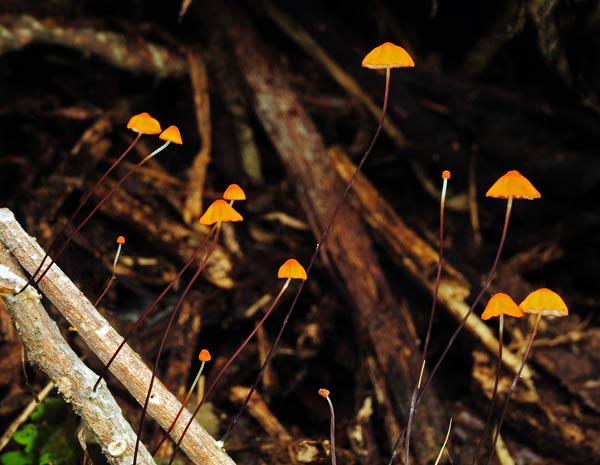
The tiny Marasmius sprucei growing out of twigs.
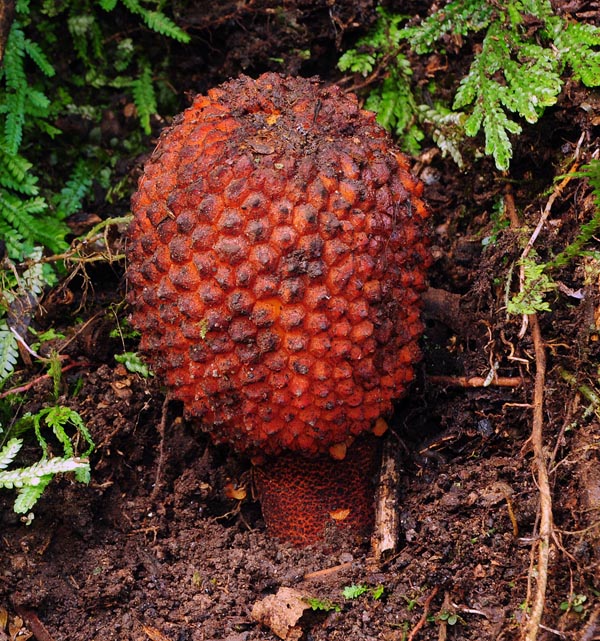
As many other members of the Balaonphoraceae family this Heliosis sp. looks quite fungal. Actually some of its cousins were first erroneously described as fungi! Balaonphoraceae are direct root parasites and do not produce any photosynthetic sugars themselves, but feed of others plants.
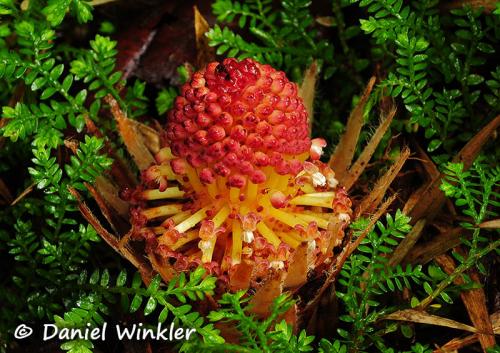
Once in flower Balaonphoraceae do not look very fungal anymore, but are still a very strange plants. This should be a male Langsdorffia hypogaea. Seen in Chicaque, April 2015 in 2400m.
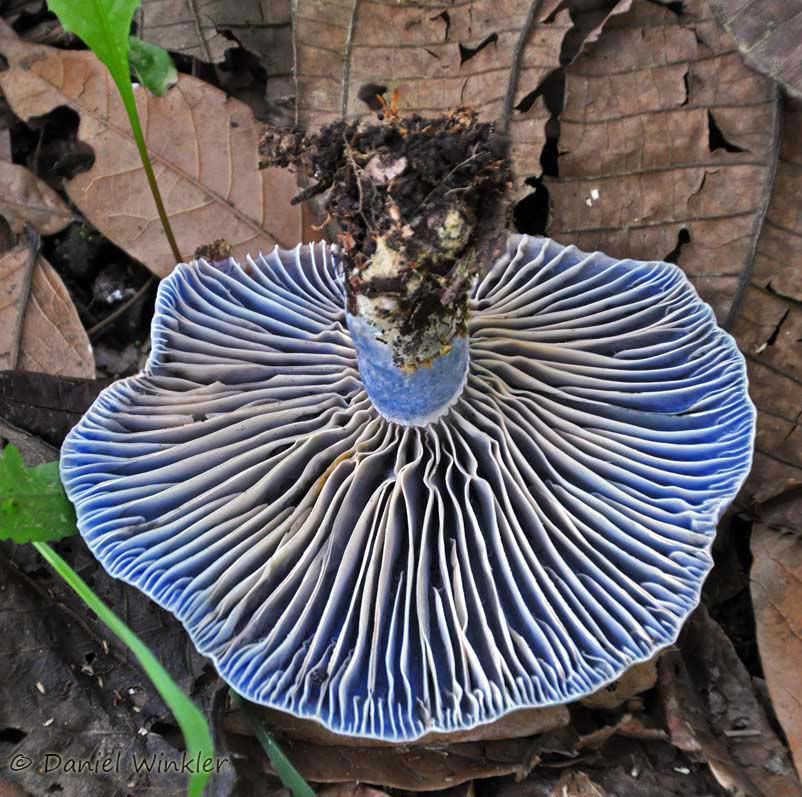
Lactarius indigo, a spectacular milk-cap that is oak associated from the US East Coast down to Colombia. It is also edible.
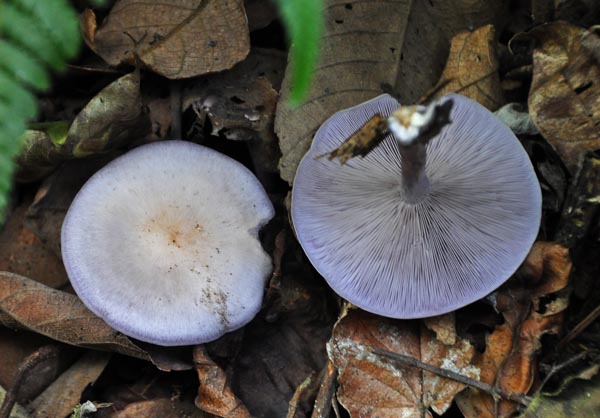
The ubiquitous Blewit, Lepista or Clitocybe nuda. A good edible!
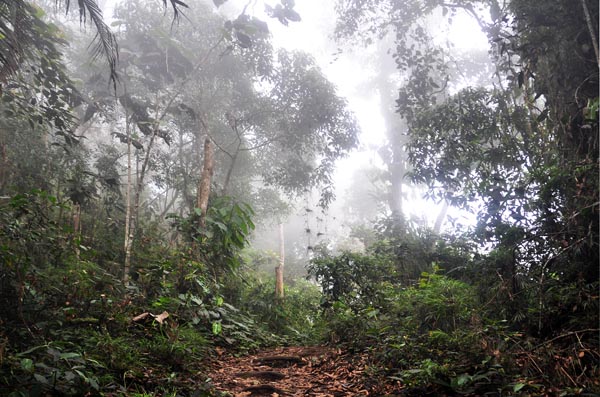
A hiking path passing through the cloud mountain oak forest. The temperature is perfect for hiking under such conditions!
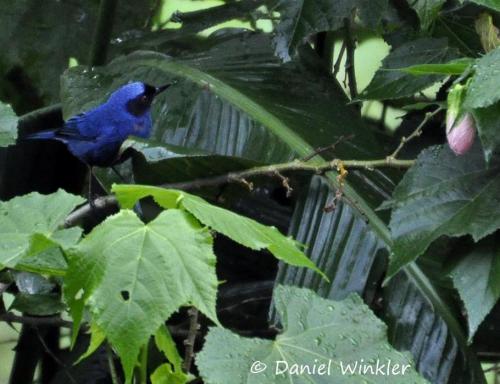
Diglossa cyanea, the Masked Flower-Piercer is easy to observe in Chicaque.
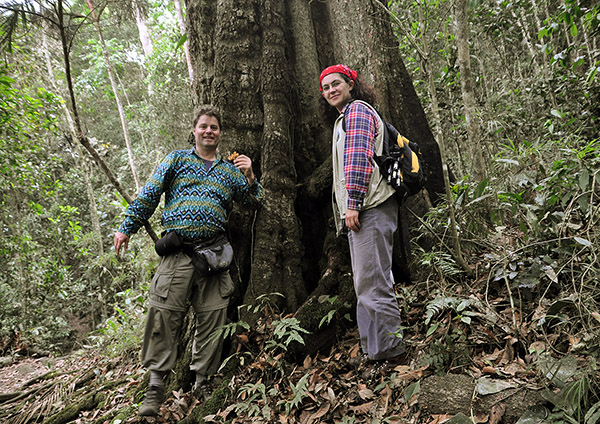
Tatiana Sanjuan, our Colombian guide and PhD mycologist. She is good with mushrooms and people! And she loves to share her fascination for her home country. Daniel Winkler on her side in the cloud forest in front of a big Andean oak (Quercus humboldtii) back in 2013.
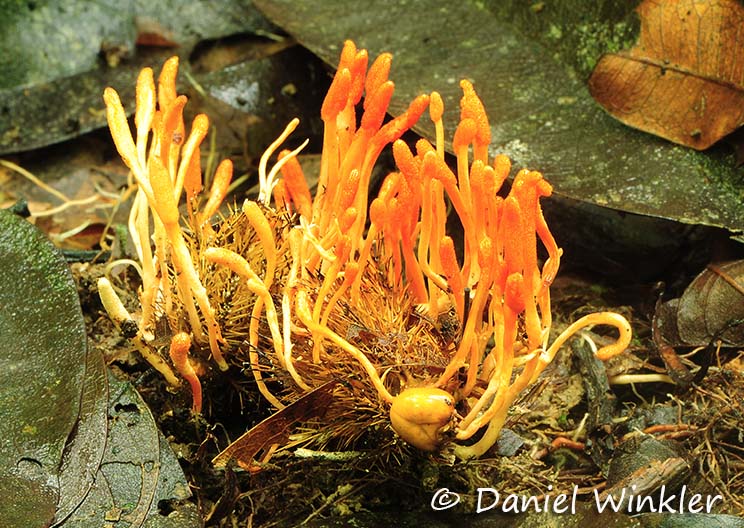
Blackwellomyces pseudomilitaris is an impressive Cordyceps growing on giant larvae seen in Rio Claro, Dep. Antioquia
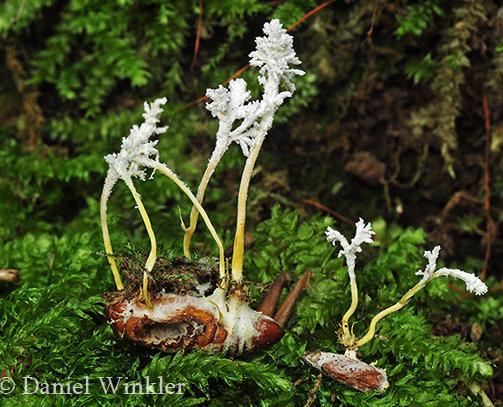
Isaria tenuipes, a Cordyceps anamorph so abundant, we stopped photographing it.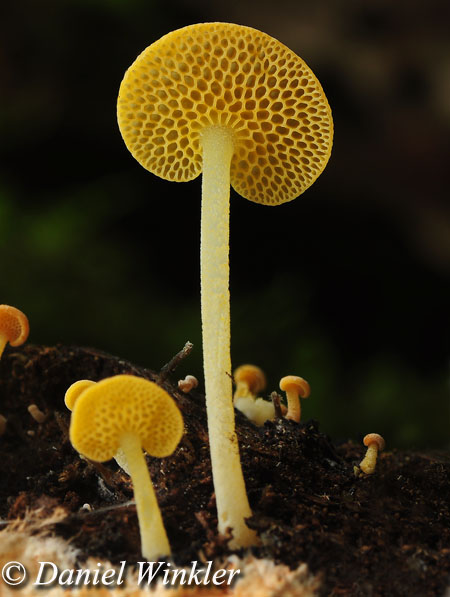
A gorgeous Favolaschia seen in Chicaque Preserve, 2500m.
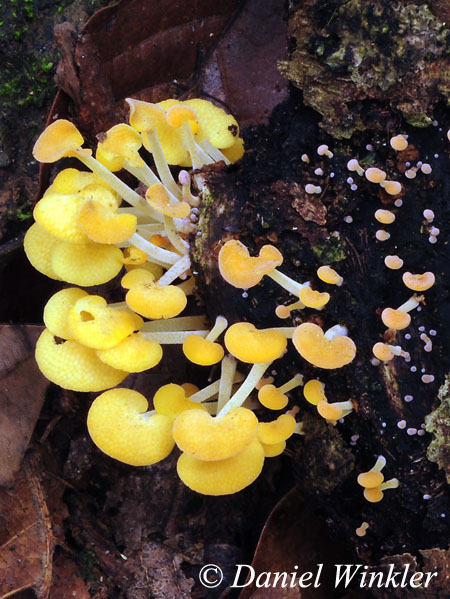
The cluster of the above depicted individual Favolaschia growing from a big fallen branch.
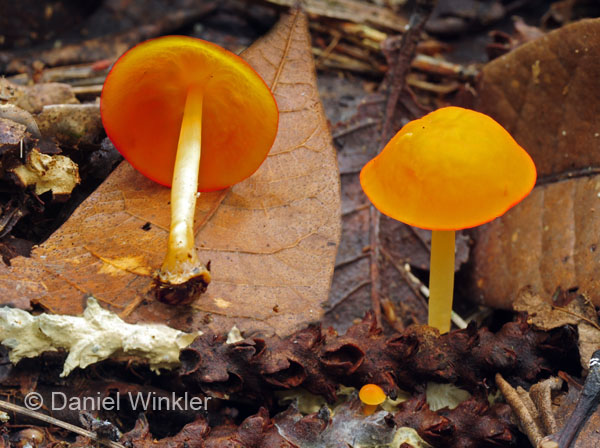
Hymenogloea papyracea, a gilled mushroom from the Marasmiaceae family without gills.
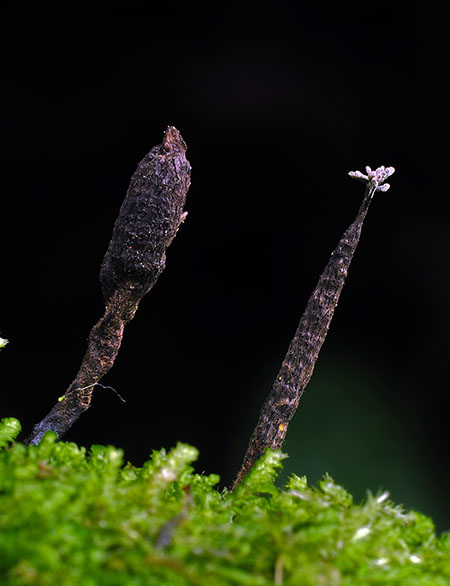
Xylaria teleomorph and anamorph growing side by side.
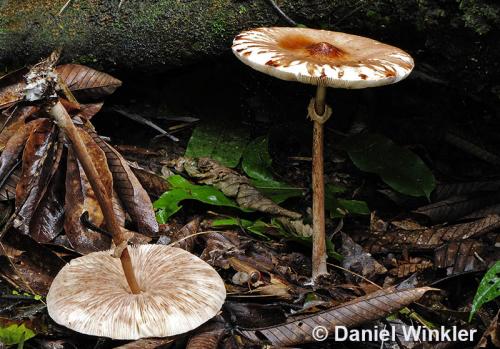
"Sombrillas o caicas" (Macrolepiota colombiana or something close to it) Colombian parasol, a choice edible mushroom. Source: Ruiz, Angélik; Henao M., Luis Guillermo; Peña, Yiny Consuelo; Martínez, Eduard 2008. Hongos comestibles de Iguaque. Bogotá Instituto de Investigación de Recursos Biológicos Alexander von Humbold, 8 p.
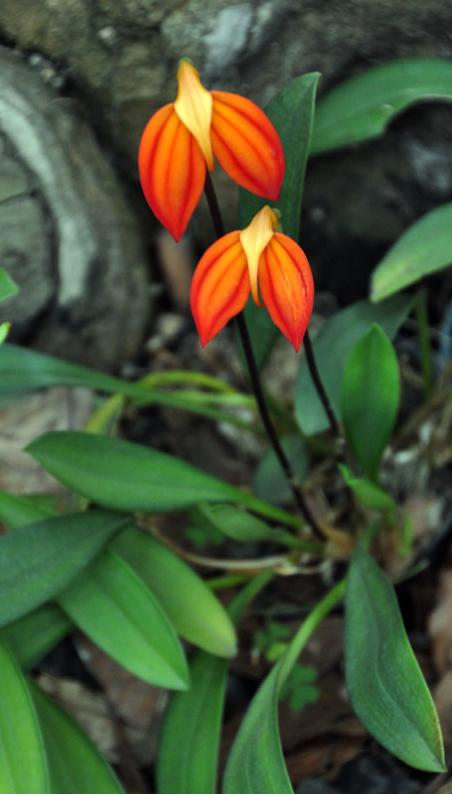
A Masdevallia ignea orchid encountered in Bogota's beautiful Botanical Garden. Masdevallias are endemic from Mexico to south Brazil. They mostly grow in the higher regions from 2500 to 4000 m, especially in the Andes.

A wild Fuchsia.
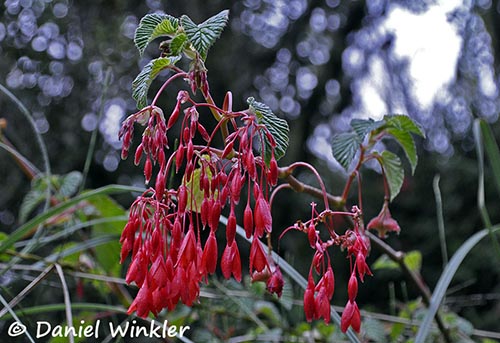
Begonia flowering near Termales del Ruiz in 2600m.
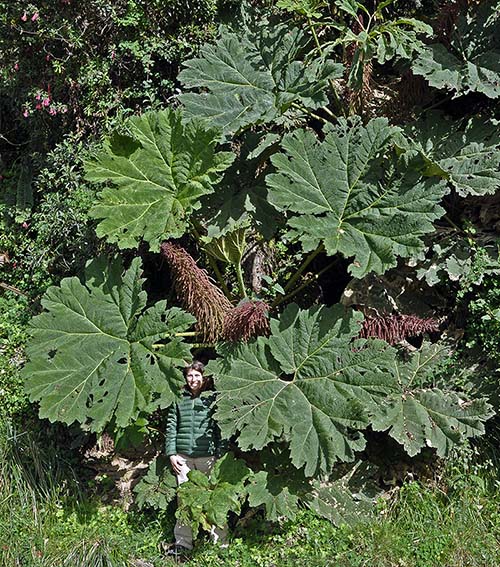
A giant Gunnera hiding Heidi in the highlands.
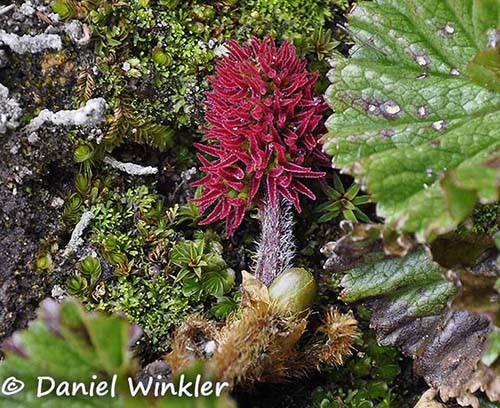
A tiny Gunnera flower branching off a ground covering vine growing in the Paramo. Most people know Gunnera as giant perennials.
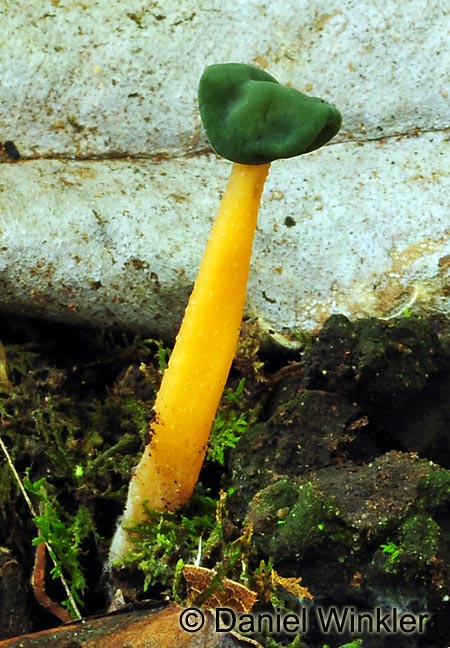
Leotia viscosa, also known as Chicken lips, is also encountered in North America and Europe.
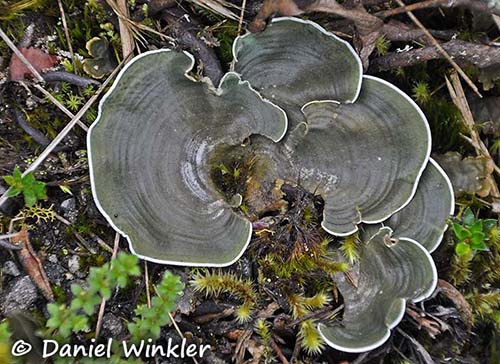
Dictyonema sp., a lichenized basidiomycete from the Hygrophoraceae. In the past there was only a few species recognized, but new DNA research shows an incredible diversity of maybe 100 or even more species. In Ecuador grows Dictyonema huaorani, which is reported to be psychedelic.
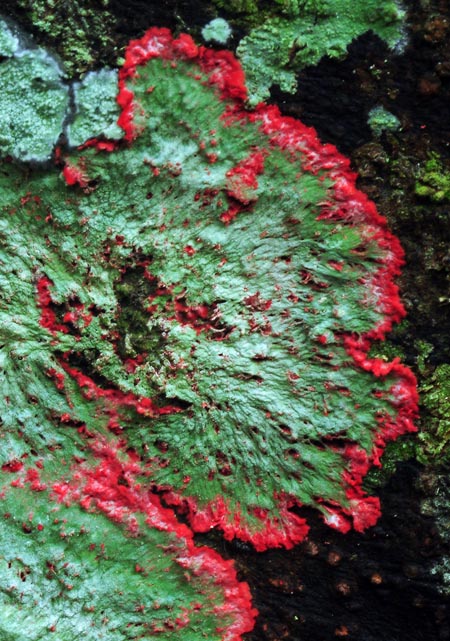
A very striking and widely distributed forest lichen in tropical and subtropical areas of the Americas: Cryptothecia rubrocincta, known in North America as the Christmas wreath lichen.
All pictures © Daniel Winkler unless otherwise noted
Galleries:
from Mushroaming Colombia 2023
221 photos from Mushroaming Colombia 2020
48 Cordyceps photos from Mushroaming Colombia 2020
165 photos from Mushroaming Colombia 2019
275 photos from Mushroaming Colombia 2017
220 photos from Mushroaming Colombia 2016
190 photos from Mushroaming Colombia 2015
130 photos Mushroaming Colombia 2014
Page first uploaded April, 2013
Last update Nov. 16, 2024
